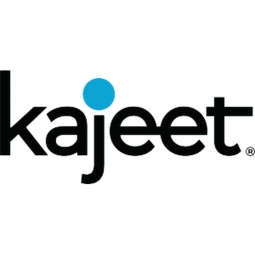技术
- 分析与建模 - 大数据分析
- 平台即服务 (PaaS) - 设备管理平台
适用行业
- 医疗保健和医院
用例
- 疾病追踪
服务
- 软件设计与工程服务
客户
未公开
关于客户
当地卫生系统已与 Kajeet 合作开发定制的远程医疗解决方案,以改善信息收集和共享,并帮助医疗决策者在患者需要的时间和地点提供所需的护理和治疗。
挑战
检测和控制感染群以及控制社区传播对于减轻 COVID-19 大流行对人类健康的影响至关重要。隔离受影响的人群并限制社交互动、旅行和人群混合长期以来一直被用作传染病传播的补救措施。今天,地方、州和联邦倡议正在使用类似的方法和尖端技术来收集和共享数据并减少 COVID-19 的损失。公共卫生官员需要快速准确的信息来识别病例,并通过强有力、清晰和有效的沟通来控制传播。
解决方案
为了提供满足各种需求的解决方案,Kajeet 解决方案工程师根据卫生系统项目团队和 Kajeet 内部远程医疗专家设定的可交付成果设计了 100% 定制部署。在六周内,Kajeet 团队定制并部署了他们的远程医疗解决方案。该解决方案采用 Kajeet 的 Sentinel 数据和设备管理平台,这是一个多租户 SaaS 平台。 Sentinel 为卫生系统的工作人员提供他们顺利运行项目所需的数据和测量工具,重点关注如何快速准确地收集 COVID-19 数据并跟踪疾病在个人、家庭、社区和城市中的传播水平。
运营影响

Case Study missing?
Start adding your own!
Register with your work email and create a new case study profile for your business.
相关案例.

Case Study
Hospital Inventory Management
The hospital supply chain team is responsible for ensuring that the right medical supplies are readily available to clinicians when and where needed, and to do so in the most efficient manner possible. However, many of the systems and processes in use at the cancer center for supply chain management were not best suited to support these goals. Barcoding technology, a commonly used method for inventory management of medical supplies, is labor intensive, time consuming, does not provide real-time visibility into inventory levels and can be prone to error. Consequently, the lack of accurate and real-time visibility into inventory levels across multiple supply rooms in multiple hospital facilities creates additional inefficiency in the system causing over-ordering, hoarding, and wasted supplies. Other sources of waste and cost were also identified as candidates for improvement. Existing systems and processes did not provide adequate security for high-cost inventory within the hospital, which was another driver of cost. A lack of visibility into expiration dates for supplies resulted in supplies being wasted due to past expiry dates. Storage of supplies was also a key consideration given the location of the cancer center’s facilities in a dense urban setting, where space is always at a premium. In order to address the challenges outlined above, the hospital sought a solution that would provide real-time inventory information with high levels of accuracy, reduce the level of manual effort required and enable data driven decision making to ensure that the right supplies were readily available to clinicians in the right location at the right time.

Case Study
Gas Pipeline Monitoring System for Hospitals
This system integrator focuses on providing centralized gas pipeline monitoring systems for hospitals. The service they provide makes it possible for hospitals to reduce both maintenance and labor costs. Since hospitals may not have an existing network suitable for this type of system, GPRS communication provides an easy and ready-to-use solution for remote, distributed monitoring systems System Requirements - GPRS communication - Seamless connection with SCADA software - Simple, front-end control capability - Expandable I/O channels - Combine AI, DI, and DO channels

Case Study
Driving Digital Transformations for Vitro Diagnostic Medical Devices
Diagnostic devices play a vital role in helping to improve healthcare delivery. In fact, an estimated 60 percent of the world’s medical decisions are made with support from in vitrodiagnostics (IVD) solutions, such as those provided by Roche Diagnostics, an industry leader. As the demand for medical diagnostic services grows rapidly in hospitals and clinics across China, so does the market for IVD solutions. In addition, the typically high cost of these diagnostic devices means that comprehensive post-sales services are needed. Wanteed to improve three portions of thr IVD:1. Remotely monitor and manage IVD devices as fixed assets.2. Optimizing device availability with predictive maintenance.3. Recommending the best IVD solution for a customer’s needs.

Case Study
HaemoCloud Global Blood Management System
1) Deliver a connected digital product system to protect and increase the differentiated value of Haemonetics blood and plasma solutions. 2) Improve patient outcomes by increasing the efficiency of blood supply flows. 3) Navigate and satisfy a complex web of global regulatory compliance requirements. 4) Reduce costly and labor-intensive maintenance procedures.

Case Study
Harnessing real-time data to give a holistic picture of patient health
Every day, vast quantities of data are collected about patients as they pass through health service organizations—from operational data such as treatment history and medications to physiological data captured by medical devices. The insights hidden within this treasure trove of data can be used to support more personalized treatments, more accurate diagnosis and more advanced preparative care. But since the information is generated faster than most organizations can consume it, unlocking the power of this big data can be a struggle. This type of predictive approach not only improves patient care—it also helps to reduce costs, because in the healthcare industry, prevention is almost always more cost-effective than treatment. However, collecting, analyzing and presenting these data-streams in a way that clinicians can easily understand can pose a significant technical challenge.




